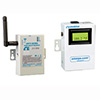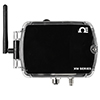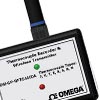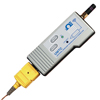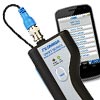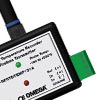 The best way to keep your equipment in good condition, avoid unplanned down time, and maximize your total cost of ownership is by anticipating issues before they occur and addressing them in a timely fashion.
The best way to keep your equipment in good condition, avoid unplanned down time, and maximize your total cost of ownership is by anticipating issues before they occur and addressing them in a timely fashion.
In a preventative maintenance situation, maintenance is done based on data collected, such as mean time to failure and mean time to repair. While this helps to avoid unplanned shutdowns by anticipating issues before they occur, the one drawback of preventative maintenance is that you can end up unnecessarily replacing parts based on manufacture guidelines or on data about average mean time. Using a predictive maintenance approach, however, can help you avoid this issue.
Predictive maintenance, which also allows you to repair or replace equipment before it runs-to-failure, is essentially taking preventative maintenance a step further. By either manually using handheld devices or through automated sensors maintenance staff can detect and confirm when machines need repairs. The benefit of predictive maintenance over preventative maintenance is that you have clear indicators and real-time data, such as temperature, sensory, vibration, or lubricant abnormalities to indicate that the equipment needs maintenance in addition to applying past data to predict maintenance.
When sensors, connected to a network system – either wirelessly or wired – are used, you may be able to reduce the total cost of ownership even further because you also reduce the manual labor required to constantly check equipment for its health status. Additionally, data collected from the sensors can be integrated into a software solution that makes the data easy to view and analyze to gain insights on key equipment maintenance metrics.
While predictive maintenance can be highly effective in extending the life of your equipment and achieving greater ROI, it isn’t always the best strategy. Before leaping into a predictive maintenance, it is recommended that you perform your own ROI calculation to determine if the investment is worth it. A pilot test of a piece of equipment or small area within your plant can also be useful to validate your calculations. Additionally, even when ROI calculations show the value of predictive maintenance, having the in-house expertise to implement it can be a challenge. For the greatest success, work with a knowledgeable partner who can guide you through the process.
Interested in learning more about predictive maintenance? OMEGA offers a comprehensive predictive maintenance solution, including sensors, transmitters, and its OMEGA Enterprise Gateway software to allow you to track, view, and analyze your equipment’s health. We also have experienced consultants to help guide you through implementation.



